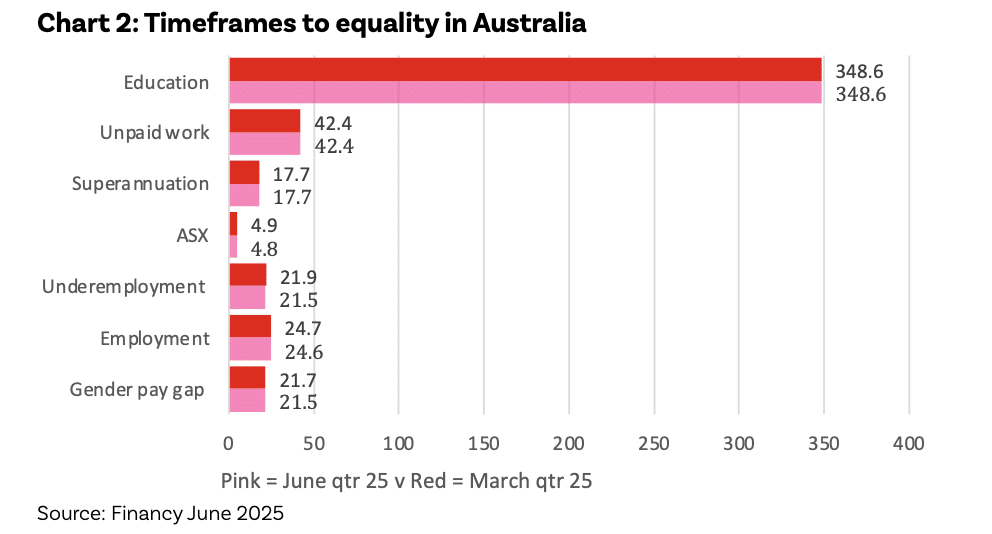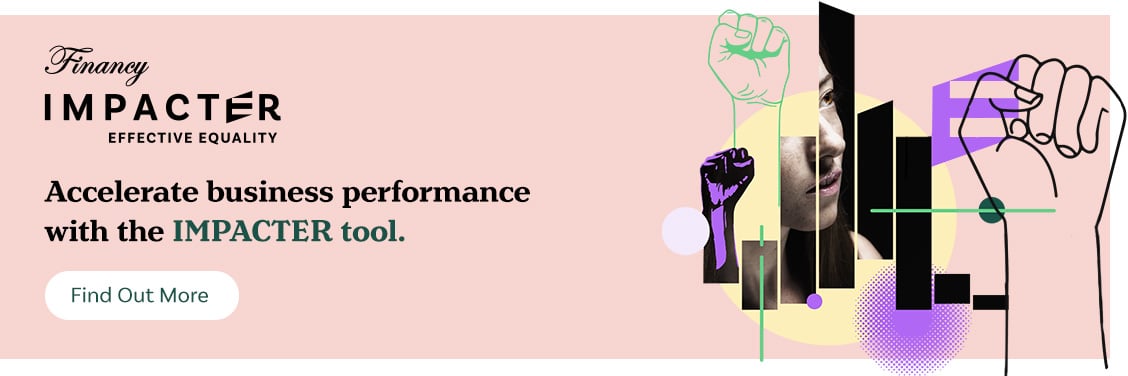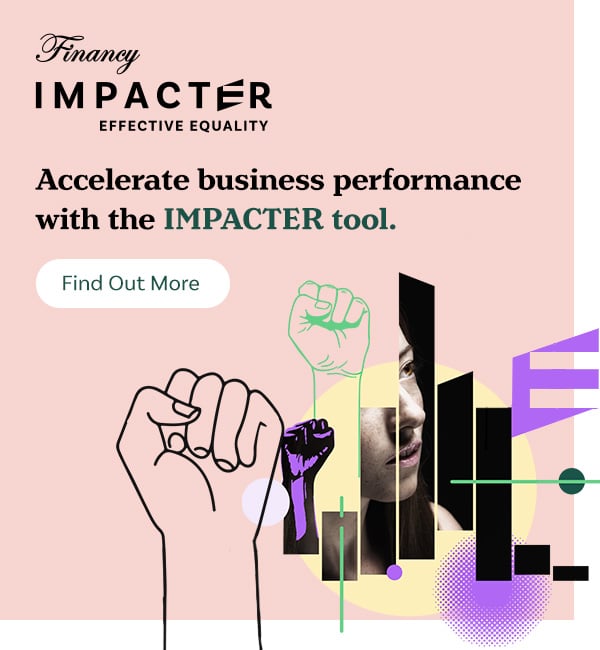Australia has made significant strides in gender financial equality, with the June quarter Financy Women’s Index (FWX) showing accelerated progress driven by a record-low gender pay gap and robust employment conditions for women.
The FWX rose to 78.67 points in the June quarter, a strong 0.9% gain from 77.94 points in March 2025. The improvement was fuelled by improvement in the FWX Employment and Gender Pay Gap sub-indexes.
However, the headline result was tempered by a setback in corporate leadership, where the steady march towards gender balance on ASX 200 boards stalled for the first time since June 2024.
“The June quarter results are a story of two steps forward, one step back on gender equality,” said Bianca Hartge-Hazelman, CEO of Financy.
“While this year we’ve seen fantastic momentum in closing the gender pay gap to a record low and strong gains in women’s employment, the stall in board appointments is a critical red flag.
“It shows that progress isn’t guaranteed and complacency is a real danger, particularly as companies hit initial targets.
“To unlock the next wave of national productivity, we must address the structural barriers holding women back, from undervaluing care-related work to tackling deep-seated industry segregation.”
Gains were seen across key economic indicators. The FWX Employment sub-index rose to 74.5 points, reflecting a significant increase in hours worked for women. Female monthly hours worked grew by a robust 1.0%, five times the pace of male employment growth (0.2%).
The gender gap in underemployment also narrowed substantially, as the female underemployment rate fell while the male rate rose. This helped the
FWX Underemployment sub-index jump to 74.1 points from 69.4 points in March.
Further bolstering the result was a welcome improvement in the gender pay gap, which narrowed to a record low of 11.5% from 11.9%. The positive momentum reflects the ongoing effects of increases to the minimum wage, which disproportionately benefit female-dominated sectors. Consequently, the timeframe to close the gender pay gap has improved to 21.5 years.
In a concerning development, progress on corporate boards stalled. The number of women on ASX 200 boards dipped to 38.1% in the June quarter, down from a record 38.4% in March. The Australian Institute of Company Directors (AICD) has noted a “plateauing of progress” among top companies that have reached the 40:40:20 gender diversity target.
Despite the dip, gender equality on ASX 200 boards remains the most achievable goal, with a projected timeframe of 4.8 years.
Bradley Distinguished Professor at UniSA’s Centre for Workplace Excellence, Carol Kulik, said “the Financy Women’s Index demonstrates that gender inequality is a multi-faceted problem, with myriad indicators.
“If we don’t address gender leadership gaps alongside gender pay gaps, the progress we see in narrowing the national gender pay gap may be short-lived. In particular, research demonstrates that gender diverse boards trickle down to generate more gender diversity in senior management – and in turn gender diversity in senior management is associated with smaller gender pay gaps.”
However, the median time to gender financial equality is 21.5 years based on the gender pay gap result.
The most significant barriers remain in areas shaped by deep societal norms. The timeframe to equality in Unpaid Work remains stubbornly high at 42.4 years. The greatest challenge is in Education, where, based on expected career earnings relative to qualifications, equality is a staggering 348.6 years away.













